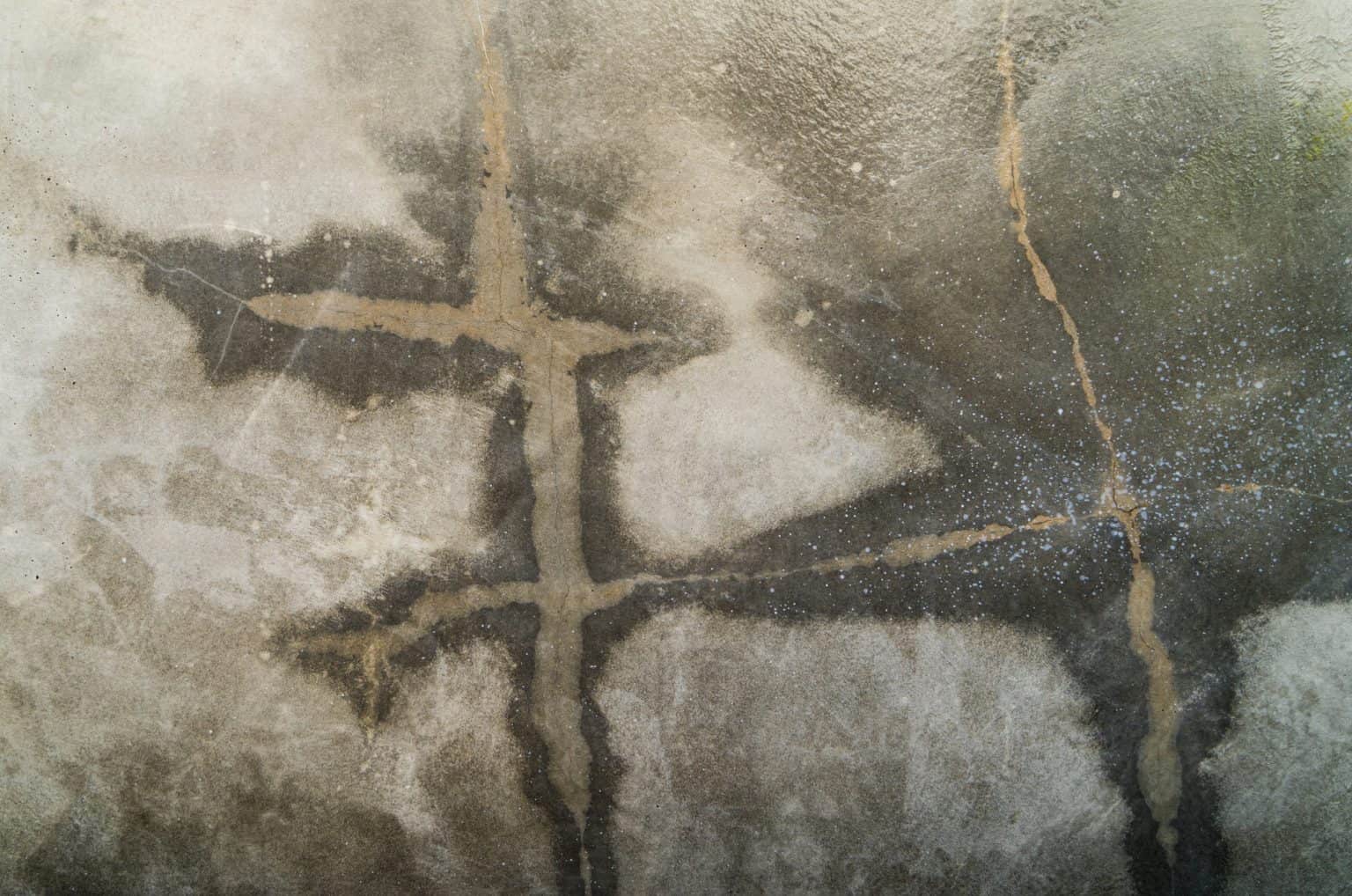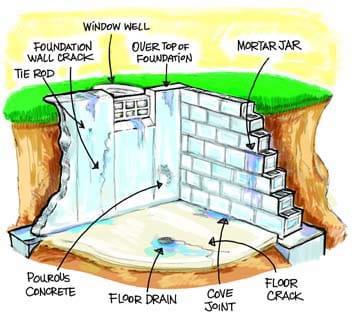Have you ever noticed dampness or even mold creeping up on your concrete floor, despite meticulous cleaning and a seemingly dry environment? This perplexing phenomenon might make you wonder, “Can water actually seep up through the concrete itself?” The answer, unfortunately, is yes. While it might sound counterintuitive, water can indeed penetrate and travel upward through concrete, creating problems like dampness, efflorescence (white salt deposits), and even structural damage.

Image: www.interiorsplace.com
understanding how water can defy gravity and permeate concrete is crucial for protecting your home or building’s integrity. Understanding this principle is especially important for basements and below-ground structures, as they are more susceptible to moisture intrusion. Whether you’re a homeowner looking to prevent water damage or a builder aiming to construct a water-resistant structure, navigating this phenomenon is vital.
Understanding the Composition of Concrete
To grasp how water can infiltrate concrete, let’s delve into its composition. Concrete is a robust and versatile material. Its basic recipe includes cement, aggregates (such as sand, gravel, or crushed stone), and water. When mixed, the cement reacts with water in a chemical process called hydration, forming a hard and durable matrix that binds the aggregates together.
Pore Structure: The Gateway for Water
Though strong, concrete isn’t entirely impervious. This is because during the hydration process, tiny air pockets and interconnected pores are formed within the concrete structure. These pores, while essential for providing strength and workability during mixing, also create pathways for water to seep through. The size and distribution of these pores vary depending on the type and quality of concrete, as well as the mixing and curing processes.
The Forces Driving Water Upward
Water’s upward journey through concrete is driven by several forces, including:

Image: jjvs.org
1. Capillary Action:
Capillary action is a fundamental phenomenon, influencing water movement in porous materials. Picture a narrow tube, like a drinking straw, dipped into water. The water level inside the straw will rise higher than the water level outside due to surface tension and adhesive forces between the water molecules and the straw’s walls. Concrete, with its interconnected pores, exhibits a similar capillary action, allowing water to climb upward.
2. Hydrostatic Pressure:
When water accumulates below a concrete slab, it creates hydrostatic pressure, a force that pushes the water upward through the pores in the concrete. Imagine a sponge submerged in water; the water penetrates the sponge’s pores due to the pressure exerted by the surrounding water. This principle applies to concrete slabs exposed to groundwater, leaking pipes, or even water pooling on the ground.
3. Negative Pressure (Suction):
In some cases, water may be drawn upward by a negative pressure (suction) created by moisture evaporating from the top surface of the concrete. When concrete dries out, creating a difference in vapor pressure between the pores and the surrounding air, water is drawn upward to replace the evaporated moisture. This phenomenon can be particularly pronounced in climates with high humidity or during periods of rapid drying.
The Impact of Water Penetration
The consequences of water seepage through concrete can be significant, ranging from aesthetic blemishes to structural deterioration. We’ll explore some common outcomes:
1. Dampness and Mold:
Moisture trapped within concrete can lead to dampness and create favorable conditions for mold growth. Mold spores can thrive in damp environments, causing discoloration, unpleasant odors, and potential health hazards.
2. Efflorescence:
Water can dissolve salts and minerals present within the concrete or in the surrounding soil. As this water evaporates, the dissolved salts crystallize on the concrete surface, creating a white, powdery coating known as efflorescence. This phenomenon can affect the aesthetics of concrete and, in extreme cases, can contribute to surface deterioration.
3. Cracking and Spalling:
Repeated freeze-thaw cycles can put added pressure on concrete. When water seeps into concrete and freezes, it expands, putting stress on the structure. When the ice thaws, the concrete may crack or even flake off, creating spalling. This process can weaken the concrete over time, leading to structural instability.
4. Reinforcing Steel Corrosion:
Concrete often contains steel reinforcement bars for added strength. When water enters concrete, it can react with the steel, causing corrosion. This rusting process can weaken the steel, potentially compromising the structural integrity of the concrete structure.
Preventing Water Seeping Up Through Concrete Floors
Now that we understand the mechanisms of water penetration and its harmful effects, let’s explore strategies for preventing this problem:
1. Proper Subgrade Preparation:
Before pouring concrete, ensuring a well-compacted and drained subgrade is crucial. This foundation should be resistant to moisture penetration. If the subgrade is prone to moisture buildup, you might need to implement a drainage solution, such as a gravel layer with a geotextile fabric to filter impurities.
2. Moisture Barriers:
Moisture barriers are essential for preventing water from migrating upward from the subgrade. These barriers can consist of plastic sheets, polyethylene membranes, or specialized waterproofing materials. They form a continuous, impermeable layer that blocks water from reaching the concrete.
3. Concrete Mix Design:
The composition of the concrete mix can influence its resistance to water. Using a lower water-to-cement ratio will result in denser, less porous concrete, reducing water penetration. Adding water-reducing admixtures to the mix can also improve workability without sacrificing strength and minimize pore size.
4. Proper Curing:
Curing concrete involves maintaining moisture levels in the freshly poured concrete to allow the hydration process to complete effectively. Proper curing prevents early drying, which can lead to increased porosity and thus greater susceptibility to water penetration.
5. Applying Sealants and Coatings:
Applying coatings or sealants to the surface of concrete provides an additional layer of protection, reducing water absorption and minimizing moisture penetration. These products come in various forms, including silicones, epoxies, and specialized concrete sealers designed for different applications.
Maintaining Your Concrete Floor
To extend the lifespan of your concrete floor and prevent water seepage, regular maintenance is crucial. These steps are essential:
1. Inspect Regularly:
Periodically check your concrete floor for signs of moisture, discoloration, or efflorescence. Early detection can help you address issues before they escalate.
2. Keep Drainage Systems Clear:
Ensure that gutters, downspouts, and other drainage systems are clear of debris, allowing rainwater to flow away from your foundation effectively.
3. Address Leaks Promptly:
Fix any leaky pipes or plumbing fixtures as soon as possible to prevent water from seeping into your concrete.
4. Avoid Excess Water:
Minimize the amount of water that comes into contact with your concrete floor, especially in areas that are prone to moisture penetration.
Can Water Seep Up Through A Concrete Floor
Conclusion
Understanding how water can seep up through concrete is crucial for maintaining the integrity and longevity of your home or building. By implementing proper construction techniques, utilizing moisture barriers, and practicing good maintenance habits, you can effectively prevent water penetration, mitigate potential damage, and ensure the beauty and functionality of your concrete floor for years to come. This article has provided a comprehensive overview of the causes, consequences, and solutions related to water seepage in concrete, empowering you to tackle this common challenge with confidence. Remember, knowledge is power, and by equipping yourself with the right information, you can protect your investment and create a safe, dry, and enjoyable living space for your family.





